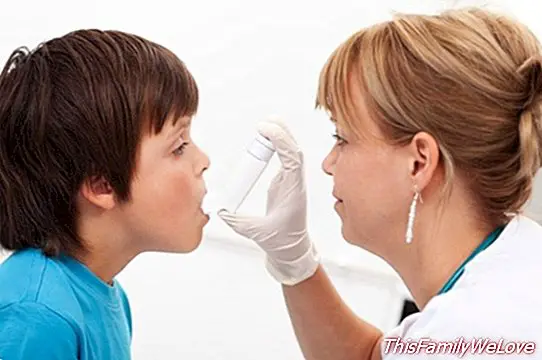Pollution triples pediatric emergencies for asthma

Currently, it is estimated that 10 percent of children are asthmatic, a chronic disease that gets worse due to environmental pollution. The high levels of pollution in recent days, together with winter respiratory infections, have tripled the number of pediatric emergencies due to asthma attacks, according to the Spanish Society of Clinical Immunology, Allergy and Pediatric Asthma (SEICAP).
The number of pediatric emergency care has multiplied by three and almost 90 percent are linked to bronchospasm, a characteristic reaction of the respiratory tract infection caused by respiratory syncytial virus (RSV), known as bronchiolitis virus.
Particularities of asthmatic children
The SEICAP indicates that 10 percent of Spanish children suffer from asthma, which is the most relevant chronic disease among children. Asthma in children makes their bronchial tubes inflamed and narrowed, which makes it difficult for the air to enter and makes breathing more difficult. If we join some external agents such as pollution, cold air and dry cold, the reaction can be exaggerated. "The symptoms of his illness, such as coughing, wheezing (whistling) or the sensation of drowning, worsen and can cause a strong crisis," says Dr. Elena Alonso, vice president of SEICAP.
On the other hand, "the end of autumn and the beginning of winter is the time of year when we observe a higher incidence of respiratory tract infections since the low temperatures characteristic of this season favor the proliferation of viruses such as the influenza, adenovirus or RSV, "says Dr. Alonso.
How pollution affects the respiratory tract
The main harmful agent of pollution is nitrogen dioxide, known as NO2, which is generated due to the combustion of engines, followed by sulfur dioxide (SO2). Both affect the respiratory tract and aggravate the symptoms of respiratory tract infections, especially in children and babies, because nitrogen dioxide can induce changes in the terminal bronchus, causing inflammation of the airway and favoring bronchoconstriction.
Several studies have shown the harmful effects of exposure to pollution. One of them is the British published in the last issue of the magazine PLoS One which states that pollution can cause a small overall reduction in lung function and increase the prevalence of children with clinically relevant decreases in lung function.
Levels of pollution in large cities
Some cities such as Madrid, Valladolid and Oviedo have registered the highest levels of pollution in recent days, due to the concentration of nitrogen dioxide (NO2). Madrid has been the one that has registered peaks over 250 micrograms per cubic meter for several consecutive days, which has increased visits to the emergency room of children with respiratory tract infections.
Among the measures recommended by the SEICAP, it is important to avoid staying in the most polluted areas for as long as possible, not practicing outdoor sports, using public transport, not exposing yourself to tobacco smoke, avoiding charged environments, ventilating well the houses, and increase the attention of children with asthma.
Marisol Nuevo Espín
Advice: Dr. Cristina Ortega, member of the working group of Respiratory Allergy and Asthma of the SEICAP and head of the Childhood Pulmonology and Allergy Unit of the Quirón San José Hospital. Doctor Elena Alonso, vice president of SEICAP.




